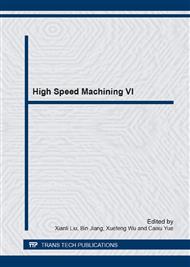p.254
p.259
p.264
p.269
p.275
p.280
p.285
p.290
p.296
Applying Genetic Algorithm and BP Neural Network Model to Predict Cutting Area Temperature Distribution in the Laser-Assisted Milling
Abstract:
Laser assisted milling(LAM) can change the cutting processability of the workpiece, which is evaluated by the temperature of cutting zone. Therefore, the prediction of cutting zone temperature in LAM has an important practical meaning. There is a kind of complicated nonlinear relation between the cutting zone temperature and its adjacent temperature. Meanwhile the BP neural network (BP NN)can truly elaborate the nonlinear relation. In this paper, a new kind of algorithm combined the advantages of genetic algorithm (GA) and BP neural network is introduced to predict the temperature correctly. GA is used to train connection weights and biases of BP neural network. According to the characteristics of cutting area temperature distribution, the adjacent temperature and time are selected as the judging indexes. Then the model of predicting the cutting zone temperature is built. Practical application reveals that the model is a very efficient method.
Info:
Periodical:
Pages:
275-279
Citation:
Online since:
July 2014
Authors:
Price:
Сopyright:
© 2014 Trans Tech Publications Ltd. All Rights Reserved
Share:
Citation:


